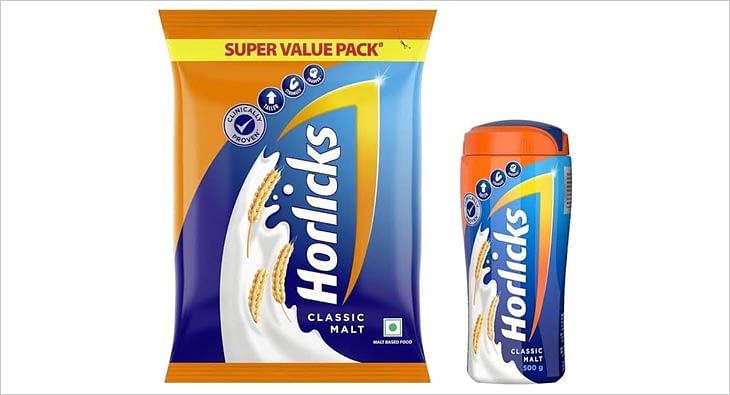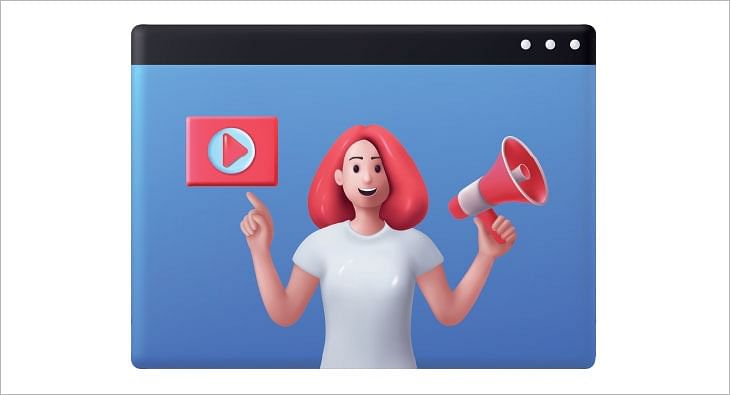BlackBerry launches Z10 with five-phased marketing push
Discussions with global advocates, using digital medium, providing first-hand experience, RIM has "invested disproportionate time & money in the campaign"

BlackBerry launched the much-awaited BlackBerry Z10 smartphone for the Indian market. This latest offering competes with Apple’s iPhone 5, as well as Nokia and Samsung’s premium offerings.
What distinguishes the launch of the Z10 is its detailed five-phased marketing strategy.
“Our work around the Z10 launch began four months ago. We have a five-phased model, which is different from the other product launches. Compared to all our other launches, we have invested disproportionate time, energy, efforts and money into this campaign and setting up this new retail experience,” shared Krishnadeep Baruah, Senior Director Marketing Asia Pacific, RIM.
 The brand is also taking this opportunity to leverage its newly appointed brand ambassador Ranbir Kapoor. Kapoor will be closely involved in the Z10 campaign as well as campaigns for products across the board, given his mass appeal.
The brand is also taking this opportunity to leverage its newly appointed brand ambassador Ranbir Kapoor. Kapoor will be closely involved in the Z10 campaign as well as campaigns for products across the board, given his mass appeal.
For the first phase of the five-phased marketing strategy, the brand tried to build an element of intrigue around the product by placing it in the hands of global advocates. This was followed by numerous sessions of discussions about various features of the product initiated with BlackBerry World, the brand’s annual conference in Orlando. Developer sessions all across the world were also conducted, where the brand released certain features of the product to create a buzz.
The second phase started in December last year. It was dominated by the digital medium that highlighted the product and its specifications. Simultaneous development of new apps was also undertaken.
‘Inspire’ was the third phase conducted in January this year, where the product was given to three key influential global celebrities, namely, writer Neil Gamain, singer Alicia Keys, film producer Robert Rodriguez, who have built individual projects called ‘Keep Moving’ in their areas of competencies. The brand will leverage these projects on social media to heighten consumer engagement by asking consumers how to end each story, song or short film.
The fourth phase includes the official launch of the product. The brand aims make consumers experience the product via activations planned at various places including malls, airports and theatres.
The brand also kicked off a pre-booking campaign for Vodafone consumers to increase awareness and get a large pie of customer base through Vodafone.
“There will be a 360-degree campaign with television, print and OOH and digital in the beginning of March; this is the amplification phase. The fifth phase is the integration phase; we have 2000 points of presence and 1300 dedicated store promoters who have been trained over the last four weeks about the product. The aim of the amplification campaign is to drive footfall into the retail stores,” added Baruah.
The launch of Z10 is going to be followed by the launch of Q10 in April, which will also be targeted at the premium segment.
“It is about creating an experience with balance, which is seamless. The journey from RIM to BlackBerry has refined our vision in the world of mobile computing. The Z10 has been developed with the voices and insights of our consumers. With BlackBerry 10, every feature, every gesture, and every detail is designed to keep you moving,” said Sunil Dutt, Managing Director India, BlackBerry.
The brand has also partnered with HDFC in the banking sector and PVR Cinemas in the entertainment space for apps, aimed to increase user interface and use.
Product snapshot
The Z10 includes 70,000 apps, voice calling, video chat, and support for content in eight Indian languages – Telugu, Tamil, Kannada, Malayalam, Devanagiri (Hindi), Gurmukhi (Punjabi), Gujarati, and Bengali – as well as support for third-party solutions for Indian language input.
The brand is confident that new and innovative features such as BlackBerry Flow, BlackBerry Hub, BlackBerry Messenger (which has been a huge success for the brand earlier and played a pivotal share in gaining traction amongst the youth) will help the brand gain market share and strengthen the its position amidst competition.
Read more news about Marketing News, Advertising News, PR and Corporate Communication News, Digital News, People Movement News
For more updates, be socially connected with us onInstagram, LinkedIn, Twitter, Facebook, Youtube, Whatsapp & Google News
About 60% Instagram influencers in India have fake followers: Report
As per a media report, influencer marketing platform KlugKlug has found that only 2.48 million profiles out of the 8 million have ‘high-quality’ followers
Two of three Instagram influencers in India have more than 60 per cent fake followers, a report by influencer marketing platform KlugKlug shows.
This is particularly true for the beauty and fashion sector, the report noted.
Other countries that have influencers with fake followers are Brazil, the UAE and Indonesia.
As per media reports, such Instagram fake followers can be roped in for as little as Rs 10 to a high of Rs 1,000.
According to Klug Klug India, only 2.48 million profiles out of the 8 million have high-quality followers.
A number of other categories have also been buying fake followers, media reports have noted.
As per a media expert, quoted in the reports, brands are finding it difficult to identify and curb the menace of fake followers and bots.
In a recent setback for influencers the Central Consumer Protection Authority (CCPA) has said those promoting activities like gambling and betting are equally liable as the companies promoting the same.
15% consumers enhance their user experience through virtual assistants: Kantar report
According to Soumya Mohanty, Managing Director & Chief Client Officer- South Asia, Insights Division, Kantar, less than 1% of ads get tested due to lack of time
Marketing data and analytics firm Kantar has unveiled a report that studies the burgeoning AI market to dish out actionable insights for marketers. Within AI, virtual assistants are the fastest growing segment. The report noted that 15% consumers enhanced their ‘user experience through virtual assistants’. This segment is the fastest growing at 27% YoY.
According to the study, while ‘fitness’ and ‘social media’ apps are amongst the leading categories, driving AI adoption (with an average of 2.3 AI led features embedded in these applications), segments like ‘BFSI’, ‘job search’ and ‘short video’ apps are relatively slow in AI adoption, with an average of 1.2 features each. Entertainment apps, digital commerce and pharmacy apps stand somewhere in the middle with 2.0 & 1.8 AI features being adopted, respectively.
Additionally, the report said that while 90% of marketing and sales leaders think their organisations should be using AI “often”, 60% said their organisations “rarely or never” do. Speaking to exchange4media, Soumya Mohanty, Managing Director & Chief Client Officer- South Asia, Insights Division, Kantar highlighted that currently there are a lot of organisations who know that there is something called AI, but haven’t yet figured out how it could help them holistically.
“A lot of the AI just gets used for efficiency purposes, so repetitive tasks get automated,” Mohanty pointed out. Data also plays a big role in why certain organisations are struggling with how to use AI.
For instance, Mohanty explained that in segments like D2C, telecom etc. there is a lot of primary or first-party data. So being able to leverage AI also gets easier. “It's the traditional large sort of FMCG type companies where data sits in silos. You don't really have one single source of data where it's a little difficult to use the full power of AI, because the full power of AI also needs a lot of data sitting in a structure that you can use,” she added.
So, can AI help marketers have a unified view of data? No, says Mohanty. “AI does not help marketers get a unified view of data. Once you have data in a unified way, AI can help you do a lot more with that data.”
According to her, organisations today need to have good, strong data warehousing. “It needs to make sense because a lot of the silos are also because everybody owns one part of it. A lot of people have their own analytics teams internally, so there are a lot of agendas and stakeholders. And then we say data is in silos because fundamentally, when you're doing something internally, different people have different stakes in it,” Mohanty added.
Puneet Avasthi, Senior Executive Director, South Asia, Insights Division, Kantar shared that most organisations are now heavily investing in creating first-party data sets. “Companies that have first party data about their consumers and transactions or interactions that they have with the brand are going to be able to leverage that more effectively to create sharper profiles for the brand as such for the consumer and build relevant recommendations at the right moments.
Panning out she also highlighted how AI can be leveraged to enhance market research and make it more accessible, a part of which Kantar is itself involved in. “A lot of times people say that we can't test an ad because we don't have time. So less than 1% of advertising gets tested and just gets put out. Does it work when it gets put out? It is the question the audience should answer, because so many times, it backfires,” Mohanty shared. Apparently, digital particularly doesn't get tested because organisations just do a/b testing and leave it at that.
Speaking of preferred use cases of AI, Avasthi added that various businesses and brands are looking at creating an experience for the brand that is in line with the brand's architecture and progress across all touch points. “That is something that the AI engines that are working behind can ensure, that all such interactions are consistently delivered across different virtual assistants or chatbots that are available to the consumer,” he said.
The other use case, according to Avasthi, is ensuring that there is greater visibility for the brand in the digital sphere as such, through various recommendation engines, when a certain need is being looked for and to throw up the right kind of information about the brand so that the brand message is amplified in the mind of the consumers.
Among other insights from the Kantar AI report is that 88% consumers used AI based algorithms which analysed their preferences, behaviours, and interests to create personalised recommendations for tailored experiences. This segment grew at 6 % YoY. At 21%, ‘smart home automation’ is a smaller segment but growing at 25% YoY.












 Share
Share
